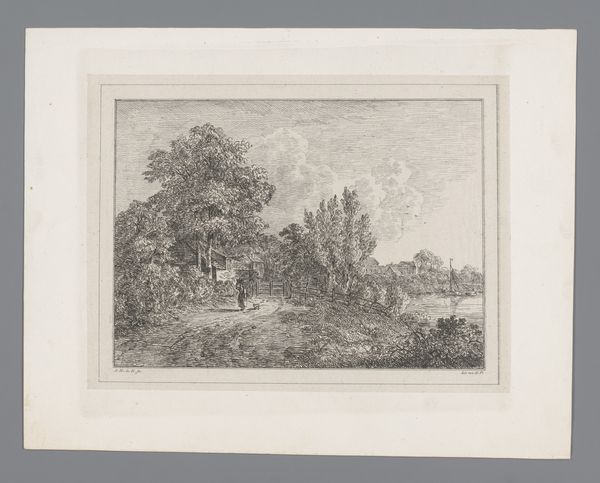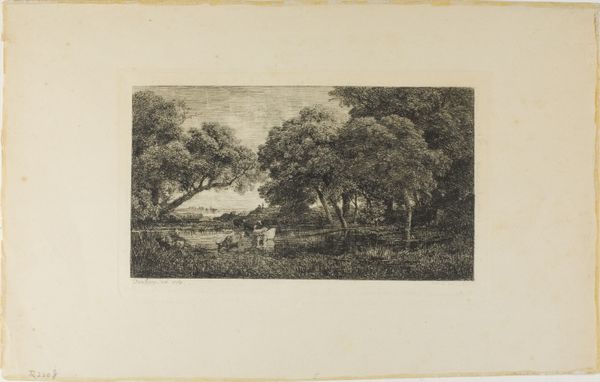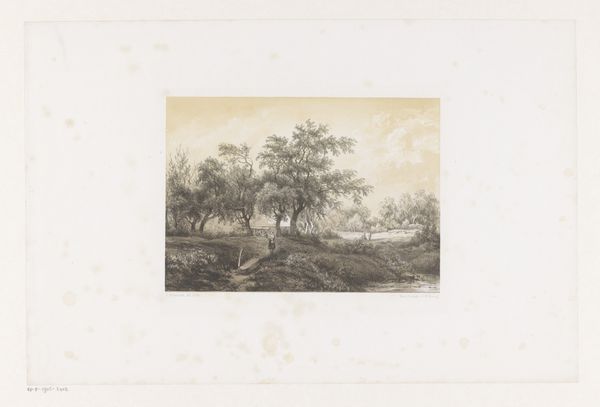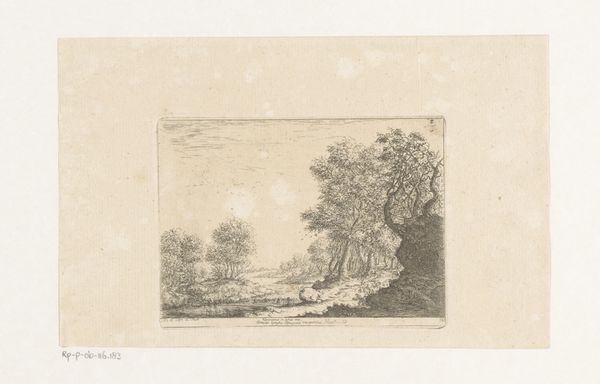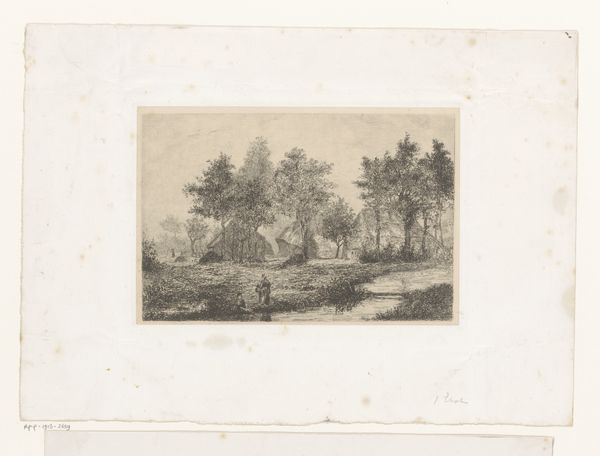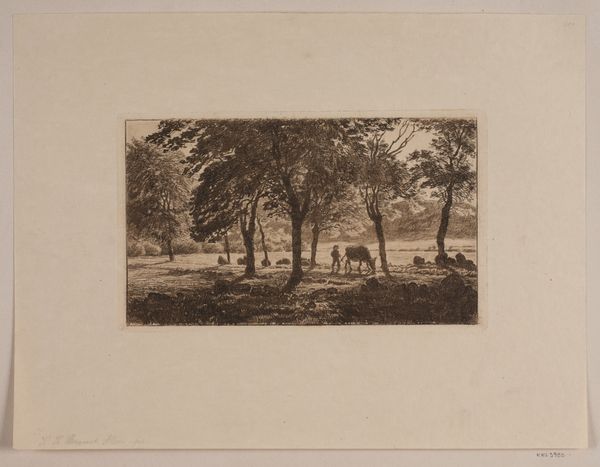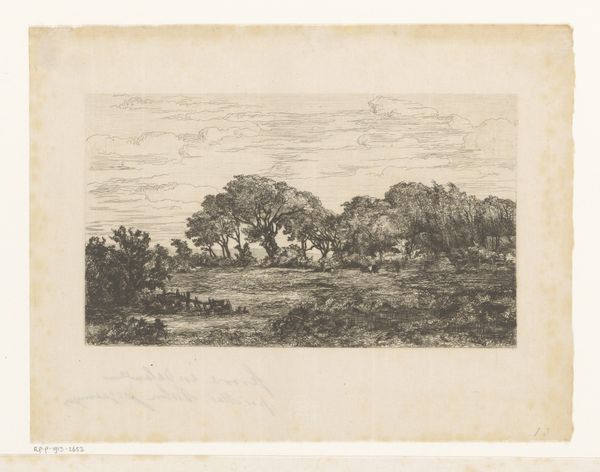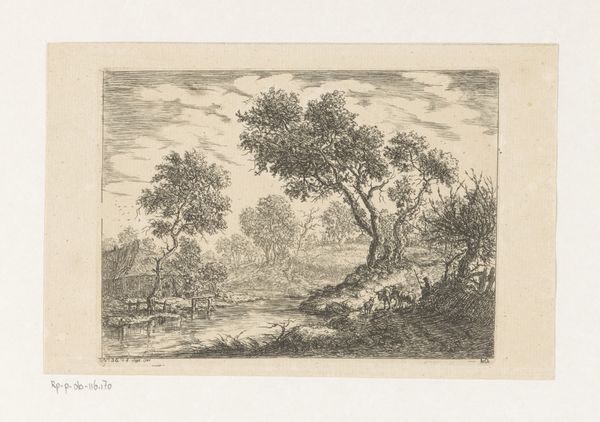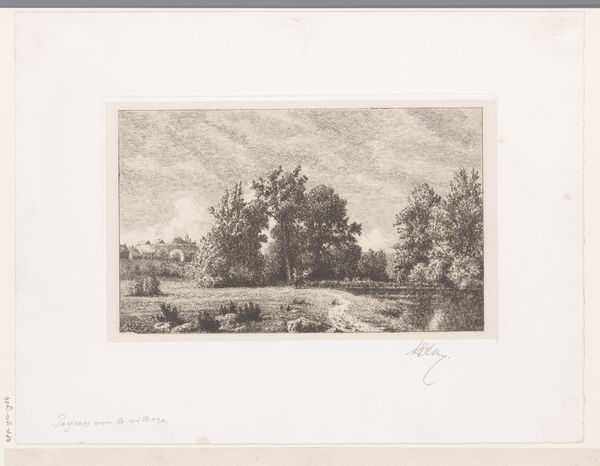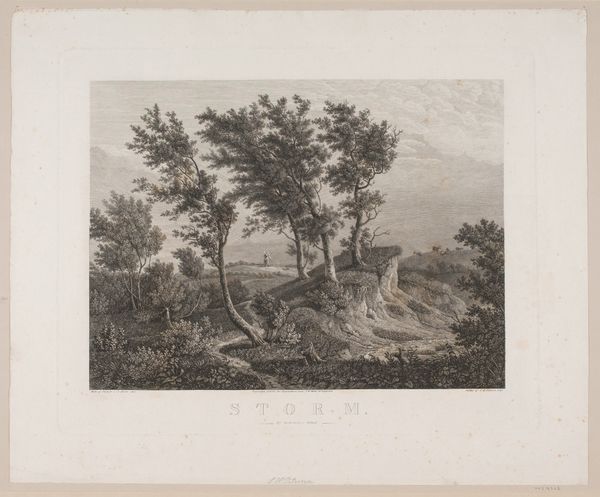
#
aged paper
#
pale palette
#
muted colour palette
#
pale colours
#
ink paper printed
#
light coloured
#
white palette
#
pale shade
#
watercolour illustration
#
watercolor
Dimensions: height 225 mm, width 285 mm
Copyright: Rijks Museum: Open Domain
Editor: So here we have "Sloot en knotwilgen bij Dordrecht," or "Ditch and pollard willows near Dordrecht," created by Arie Ketting de Koningh in 1839. It’s currently held at the Rijksmuseum. It looks like it’s made with ink on paper... There's a tranquility to it, despite its simplicity. What's your perspective on this landscape piece? Curator: The etching itself speaks volumes about the available materials and the printing process. The artist would have needed access to the metal plate, acids, and a printing press. Furthermore, paper wasn't as cheap as it is now; its production was more involved. Consider the socio-economic aspect. Who was the artist making this for, and how would it have been distributed? Editor: That’s an interesting thought; it was made in 1839… maybe the burgeoning middle class, eager to display signs of cultured taste? Were prints like this more accessible than, say, an oil painting? Curator: Exactly! This speaks directly to your point on accessibility. Prints allowed a broader audience to engage with art, distributing landscapes and scenes of Dutch life. Moreover, what can we discern from the artist's choice to depict pollard willows, specifically? How are pollarded trees shaped by human interaction, and what do you suppose the labor would entail to prepare these? Editor: They look really interesting - those gnarled, almost unnatural shapes... it almost doesn't fit within this traditional "landscape" view. Were they used for practical things, the wood used somehow? Curator: Precisely. They were, providing resources, with a whole material process there involved in planting, pruning, and harvesting... reflecting the dynamic relationship between the people and the land in the early 19th century. Editor: So it’s less about this idealized view of nature and more about showing the ways humans interact with, and even manipulate, the environment for their own purposes. It makes me think of the work of laborers who shaped this landscape! Curator: It does. Artmaking is labor. Landscape maintenance is labor. And images of those landscapes…well, that’s where we start seeing complex relations.
Comments
No comments
Be the first to comment and join the conversation on the ultimate creative platform.
